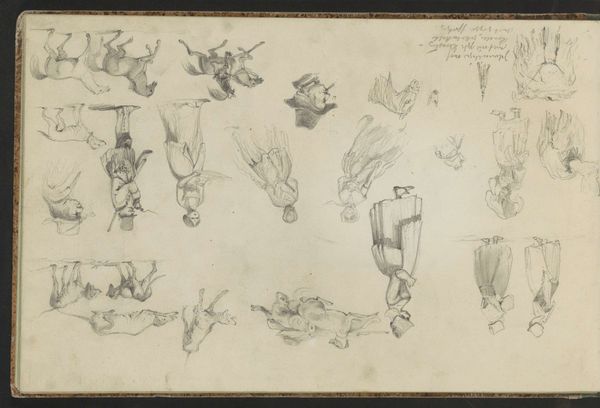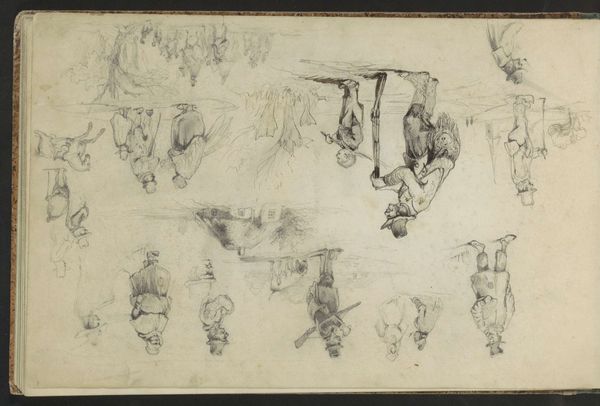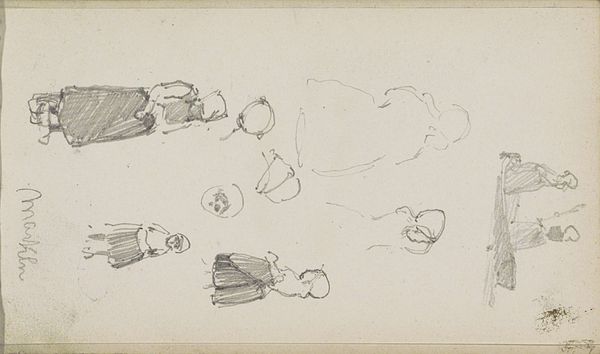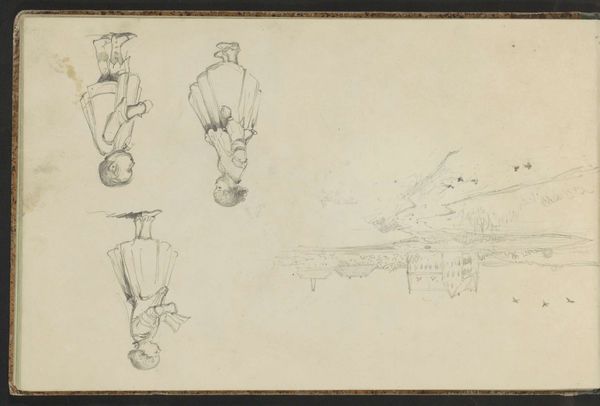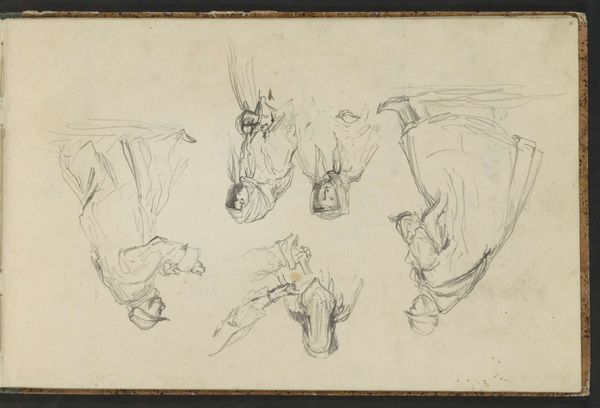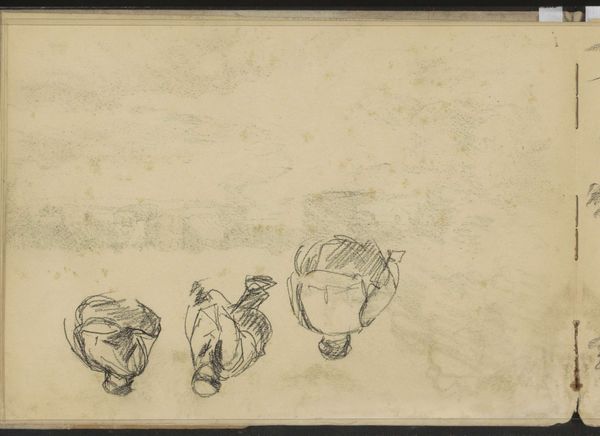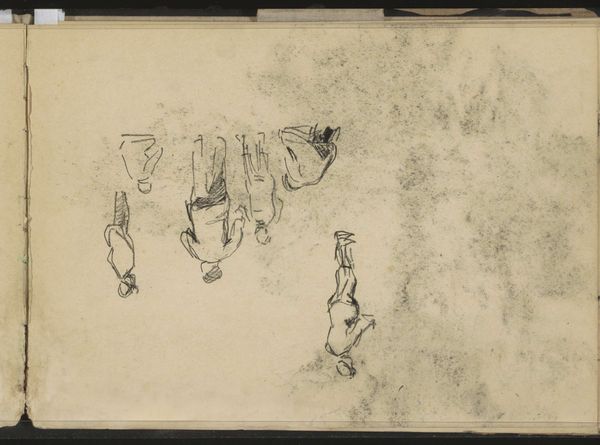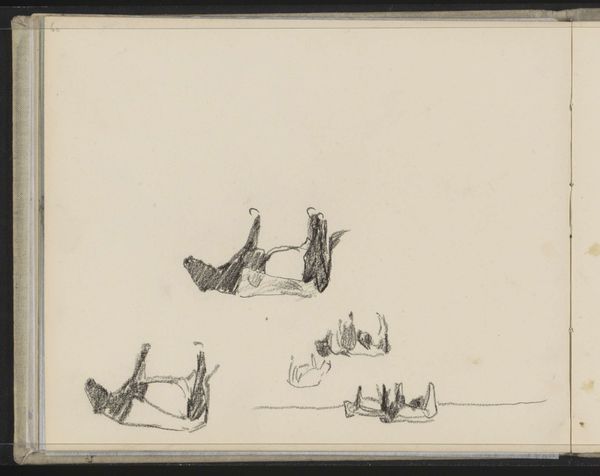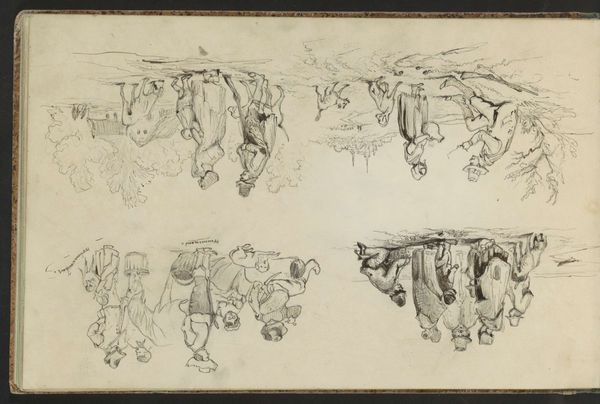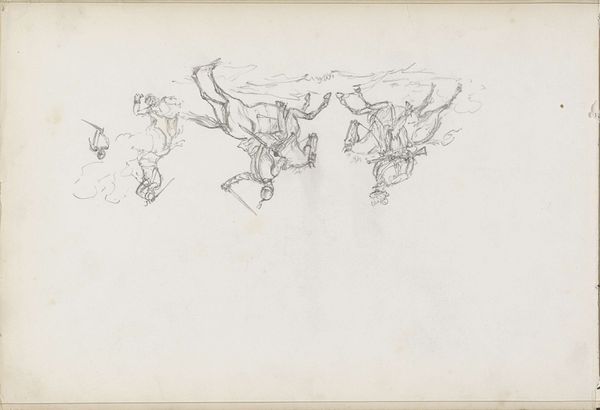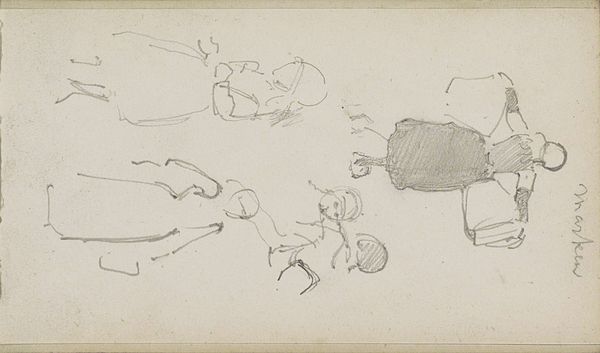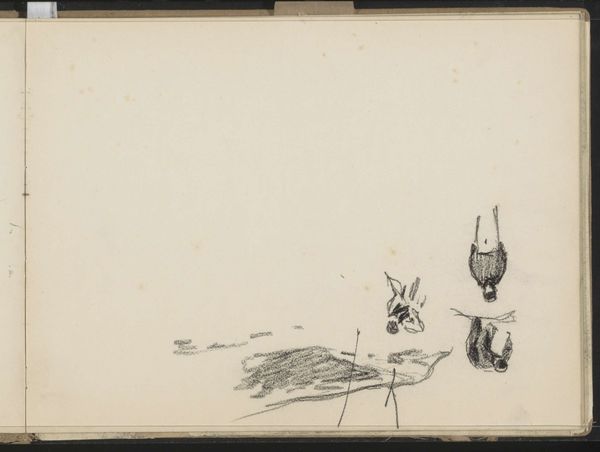
Vrouw in een lange jurk, uit verschillende aanzichten gezien 1840
0:00
0:00
johannestavenraat
Rijksmuseum
drawing, paper, pencil
#
portrait
#
drawing
#
figuration
#
paper
#
romanticism
#
pencil
Copyright: Rijks Museum: Open Domain
Curator: Before us is Johannes Tavenraat's drawing, "Vrouw in een lange jurk, uit verschillende aanzichten gezien," created around 1840. It's currently held at the Rijksmuseum. The work presents a study of a woman in a long dress, rendered in pencil on paper. What strikes you first? Editor: There's an ephemeral quality to these sketches. The wispy lines lend a sense of movement, almost as if she is captured in a series of fleeting moments. It is a fascinating juxtaposition, figures drawn multiple times as studies, but it conveys more dream-like presence. Curator: It's interesting you say "dream-like," because I think the rapid, loose strokes might indicate Tavenraat's attempt to quickly capture a likeness or pose, as was often the role of drawings within Romanticism. Note the dress's lines; we see how the artist captures its fall and shape with the female form. The artistic conventions and aristocratic portraits come to mind. Editor: Absolutely. And in those multiple renderings of the dress, there's a captivating study of light and shadow. See how he uses the pencil to suggest depth and volume, particularly in the folds of the fabric. He transforms simple lines into form. Curator: The role of these studies could provide insight into the social function of women. Dresses have social and class associations and speak volumes about women’s expected behaviour. Editor: But what is the figure looking at in her multiple mirrored and distorted stances? Her face conveys a sense of introspection. It beckons you to consider the state of her mind. The artist captures not just what the model is wearing but also what she could be thinking. Curator: It is clear that there is a conversation between inner emotion and its physical manifestation through posture. Such studies were crucial for the rising portrait industry. Tavenraat navigates both representation and cultural meaning here, I think. Editor: Ultimately, Tavenraat prompts me to see form as a dynamic arrangement of line and shadow. A way that can invite both the viewer and the figure to meditate on art. Curator: A very perceptive assessment of both technique and context. It gives us, perhaps, a small glimpse into the fashion, artistry, and socio-political expectations of the 1840s.
Comments
No comments
Be the first to comment and join the conversation on the ultimate creative platform.
